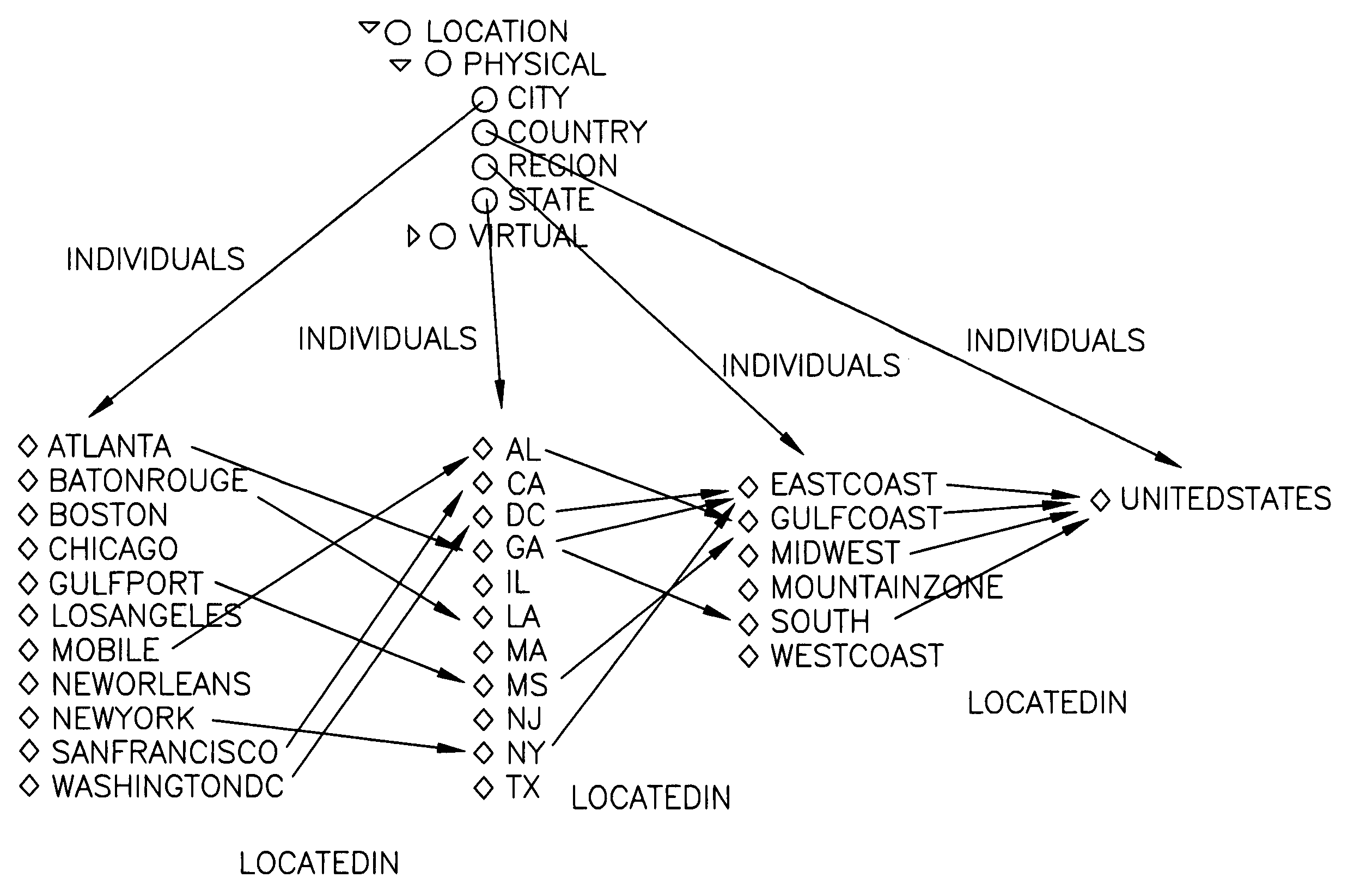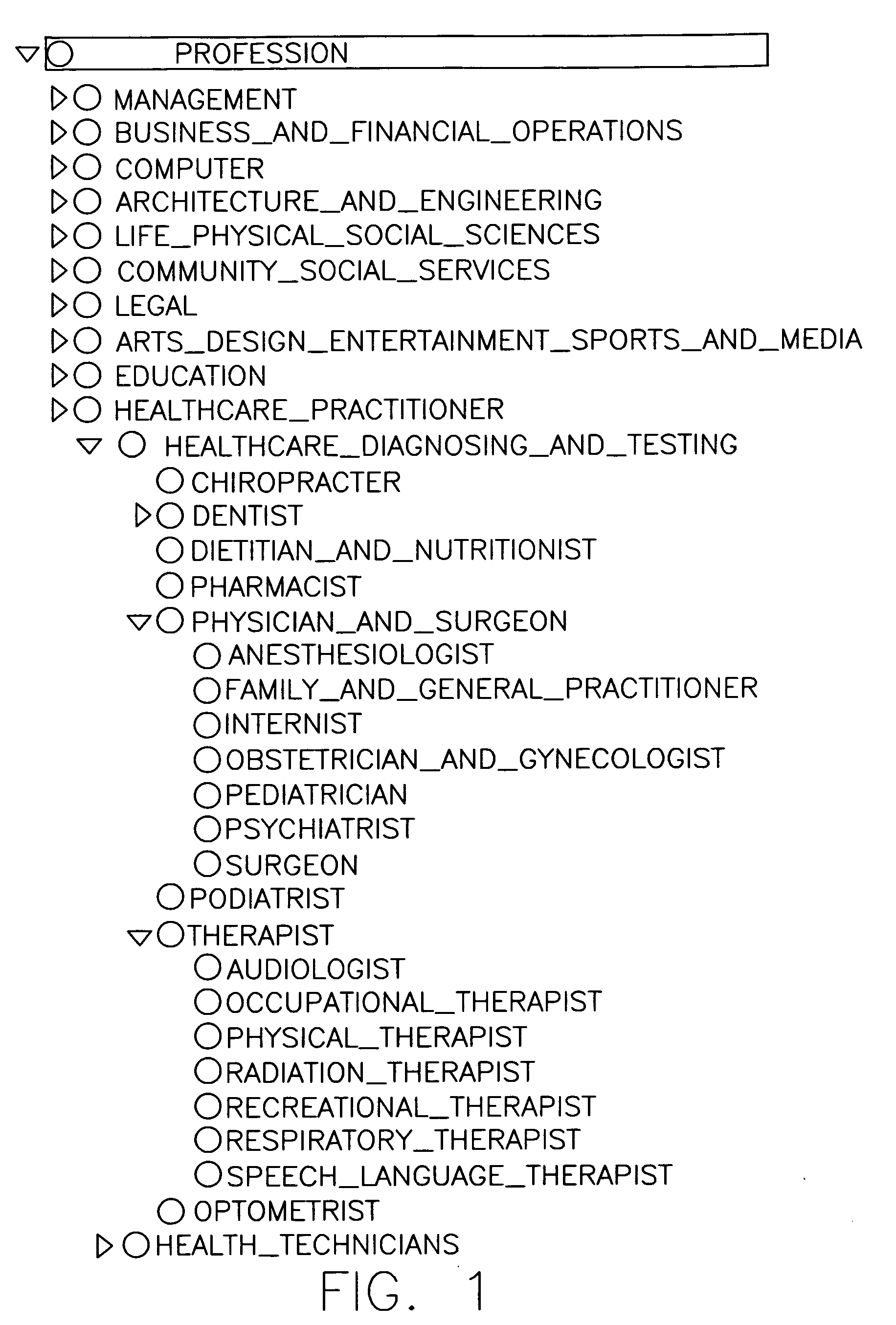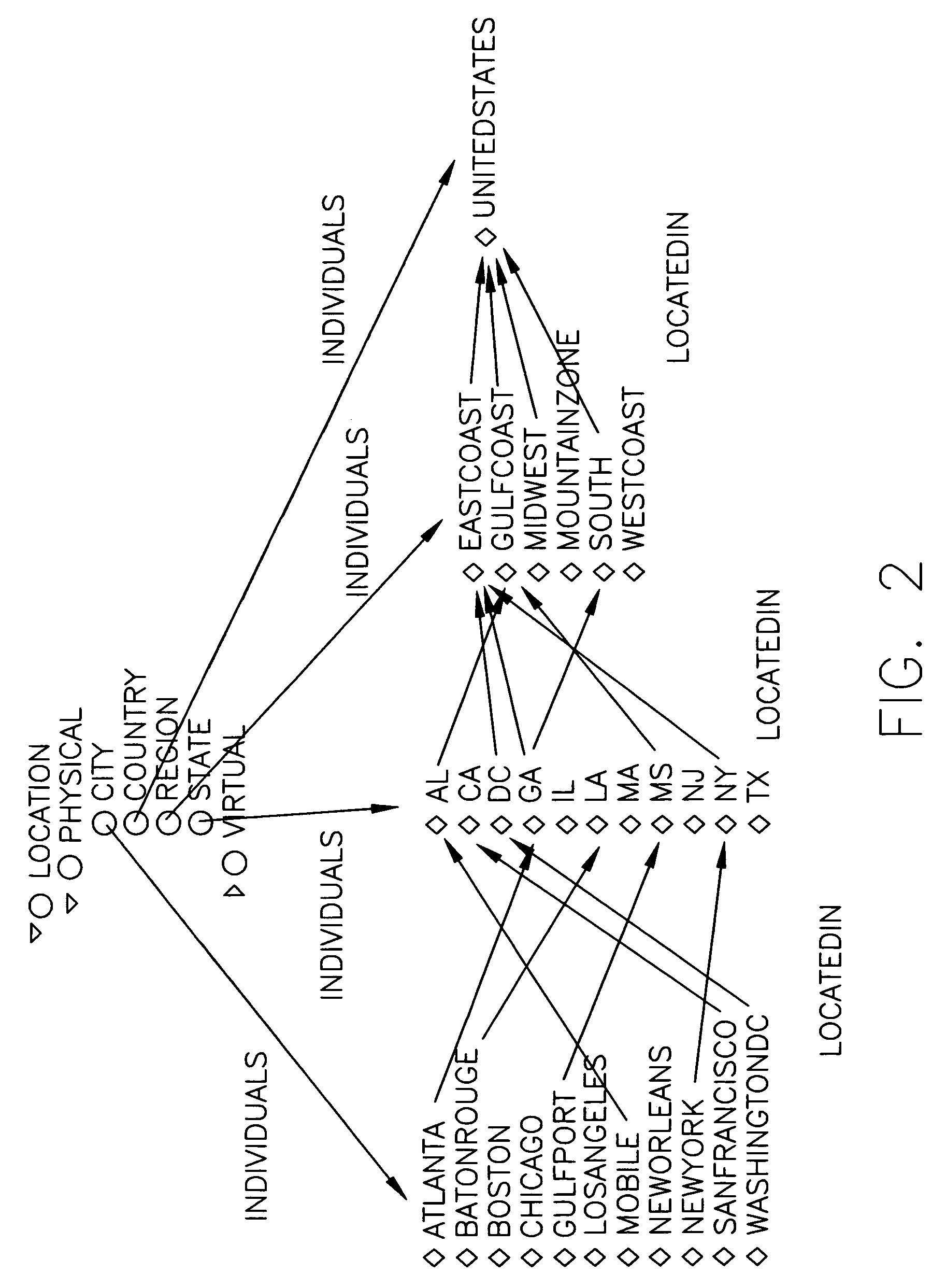Information retrieval from relational databases using semantic queries
a technology of relational databases and semantic queries, applied in relational databases, database models, instruments, etc., can solve problems such as inability to answer queries, mismatch between user's intended query and database schema, and unsuitable for typical information-finding tasks of end-users
- Summary
- Abstract
- Description
- Claims
- Application Information
AI Technical Summary
Benefits of technology
Problems solved by technology
Method used
Image
Examples
Embodiment Construction
[0023]By way of general overview, in accordance with at least one presently preferred embodiment of the present invention, users will specify queries using SPARQL [6], a popular Semantic Web language for querying RDF graphs. The system then takes in a SPARQL query and uses a Description Logic reasoner to help infer semantically relevant results; this provides the return of more results than what is explicitly mentioned in the databases. Different categories of semantically relevant results can preferably be defined, e.g., direct results, inferred results and related results.
[0024]Ontologies describe semantic information about the terms (entities and relations) that may be present in the database. This semantic information includes the concepts that the term belongs to and its relations to other terms. In general, ontologies describe hierarchies of different kinds of concepts, the properties of these concepts, individuals that belong to the concepts and the relations between individu...
PUM
 Login to View More
Login to View More Abstract
Description
Claims
Application Information
 Login to View More
Login to View More - R&D
- Intellectual Property
- Life Sciences
- Materials
- Tech Scout
- Unparalleled Data Quality
- Higher Quality Content
- 60% Fewer Hallucinations
Browse by: Latest US Patents, China's latest patents, Technical Efficacy Thesaurus, Application Domain, Technology Topic, Popular Technical Reports.
© 2025 PatSnap. All rights reserved.Legal|Privacy policy|Modern Slavery Act Transparency Statement|Sitemap|About US| Contact US: help@patsnap.com



